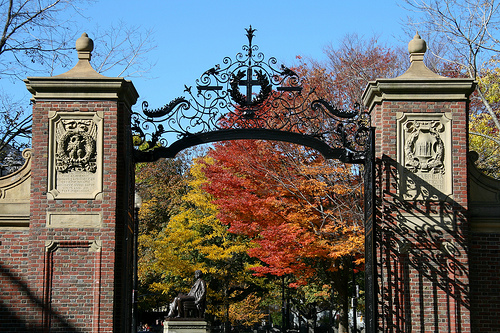
We just added the recently released Fall 2011 transfer admissions numbers for some of the top schools in the US (the “2013″ Top 50 National Universities according to US News). These are the stats for students who applied to transfer and start Fall 2011 term.
(US News releases its Top 50 every September, based on information from the previous fall. So these transfer stats for students transferring and starting school Fall 2011 is for the US News Top 50 rankings released September 2012.)
Check it out by clicking here, or by hovering over the “Statistics” tab at the top of the page and clicking on the first option in the dropdown menu.
Additionally – because we love you, obviously – we also put together a table comparing the transfer admissions rates for Fall 2011 and 2010 at the same schools. Click here to check it out, or hover over the “Statistics” menu and click on the second dropdown. It’s one thing to see what a college’s transfer admission rate was in a given year, but it’s also interesting to see how consistent (or not) the admissions rates are over a period of time.
Generally speaking, it looks like the trend of shrinking admissions rates continues this year. Here’s our quick analysis:
Transfer acceptance rates vs. freshman acceptance rates
18 of the 50 schools had higher transfer admissions rates than freshman admissions rates, while 31 of the 50 had lower transfer admissions rates versus freshman admissions (Princeton, which doesn’t take any transfers, is the remaining school).
Fall 2011 applications filed vs. Fall 2010 applications filed
The number of transfer applications filed for the Top 50 that we have data for (48 of the 50 schools) increased by 9%, to 182,729 from 167,498. In other words, about 15,000 more transfer applications for the Top 50 were filed for Fall 2011 versus Fall 2010. We don’t have the numbers for Rensselaer Polytechnic, which wasn’t in the Top 50 last year, so we can’t compare their numbers.
Fall 2011 transfer acceptance rates vs. Fall 2010 transfer acceptance rates
16 of the 50 colleges had their transfer admissions rates increase versus last year, while more schools (32 of the 50) became more selective.
While the number of applications went up 9%, the number of acceptances stayed flat, at 62,615 Fall 2011 versus 62,556 Fall 2010. So, 9% more applications fighting for pretty much the same number of acceptances equals lower transfer acceptance rates overall.
Duke only accepted 26 transfer applicants for Fall 2011 versus 74 the previous year, a 65% drop. Georgetown, Penn, Brandeis, Chicago, and Wake Forest all reduced the number of “yes” letters they sent out by 20% or more.
On the flip side, MIT and Stanford both more than doubled the number of transfer students they accepted versus last year. MIT accepted 44 transfers for Fall 2011 versus 18 for Fall 2010, and Stanford accepted 58 students versus only 25 last year.
The biggest change: transfer applications to Harvard more than doubled
Looking at the biggest changes, the number of people applying to transfer to Harvard more than doubled to 1,486 from 612 the previous year. We’re guessing this is because Harvard just re-initiated its transfer program last year, and it takes a little while for the word to get out.
Conclusion: transfer rates move a lot so apply to several schools
We think the key piece of information here is that transfer admissions rates fluctuate a lot more than freshman admissions rates. This is mainly because transfer space varies a lot each year depending on the spaces available given each colleges’ development plans and their own dropout/transfer out rates.
Based on that information, two important takeaways:
(1) Don’t let a single year’s acceptance numbers determine whether or not you apply to a school. Do the best you can, and if you’re a competitive applicant, you have good reasons for transferring, and you want to go the school, apply. You really don’t know if they’ll have more space or less space next year, and you don’t know how many students you’ll be competing against for those spaces.
(2) If you’re really interested in transferring, apply to several schools. For example, maybe you think you’re the perfect fit for X University, your top choice. And maybe you are, but unfortunately it turns out they just don’t have any space this year. You should’ve also applied to Y University, which is almost as good a fit, and which happens to have plenty of space due to a housing initiative they just started.
Overall, just use the stats as a metric to get a roundabout sense of how hard it may be to transfer to a particular school. Either way, if you have a good profile for a school and have good reason to transfer to it (such as any of the many successful real stories mentioned in the book), the stats shouldn’t affect your approach too much either way.
Question of the Day: Do you see any interesting patterns in the stats? Surprised that a particular school has a particular transfer admissions rate? Intrigued that a certain college’s transfer admissions rate changed so much? Let us know in the comments! We plan on following up with some of the schools to better understand their particular policies toward transfer admissions.
Photo: timsackton
Pingback: Transfer Admissions Rates For US News 2014 Added | Transferweb()
Pingback: Transfer Admissions Rates for US News 2012 Added | Transferweb()